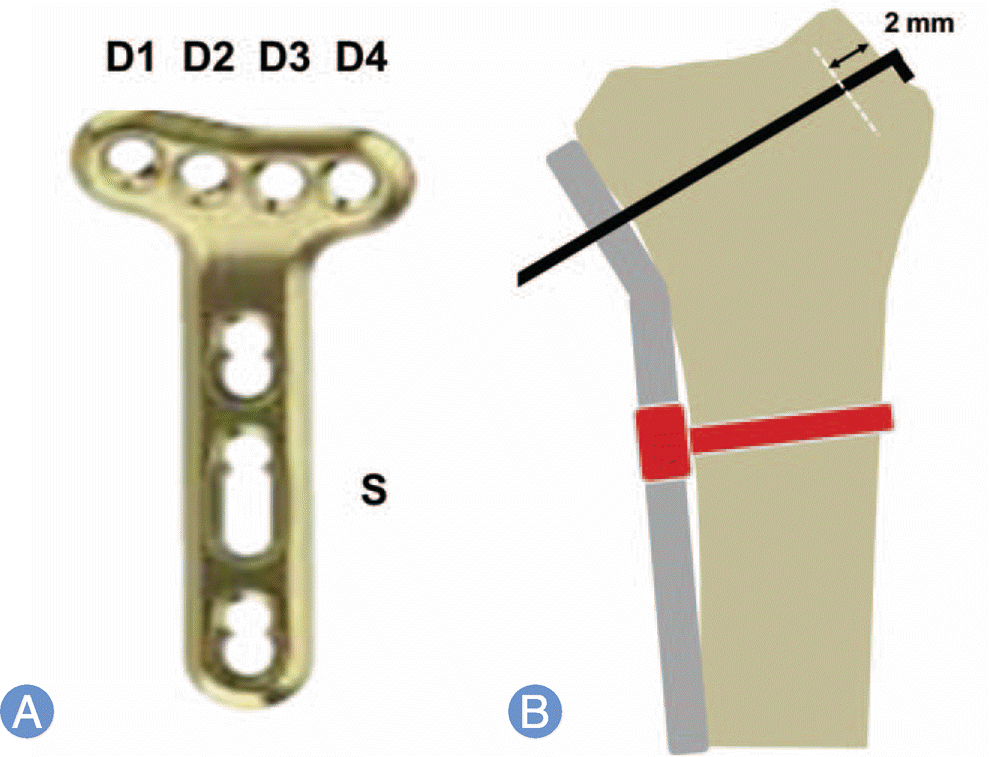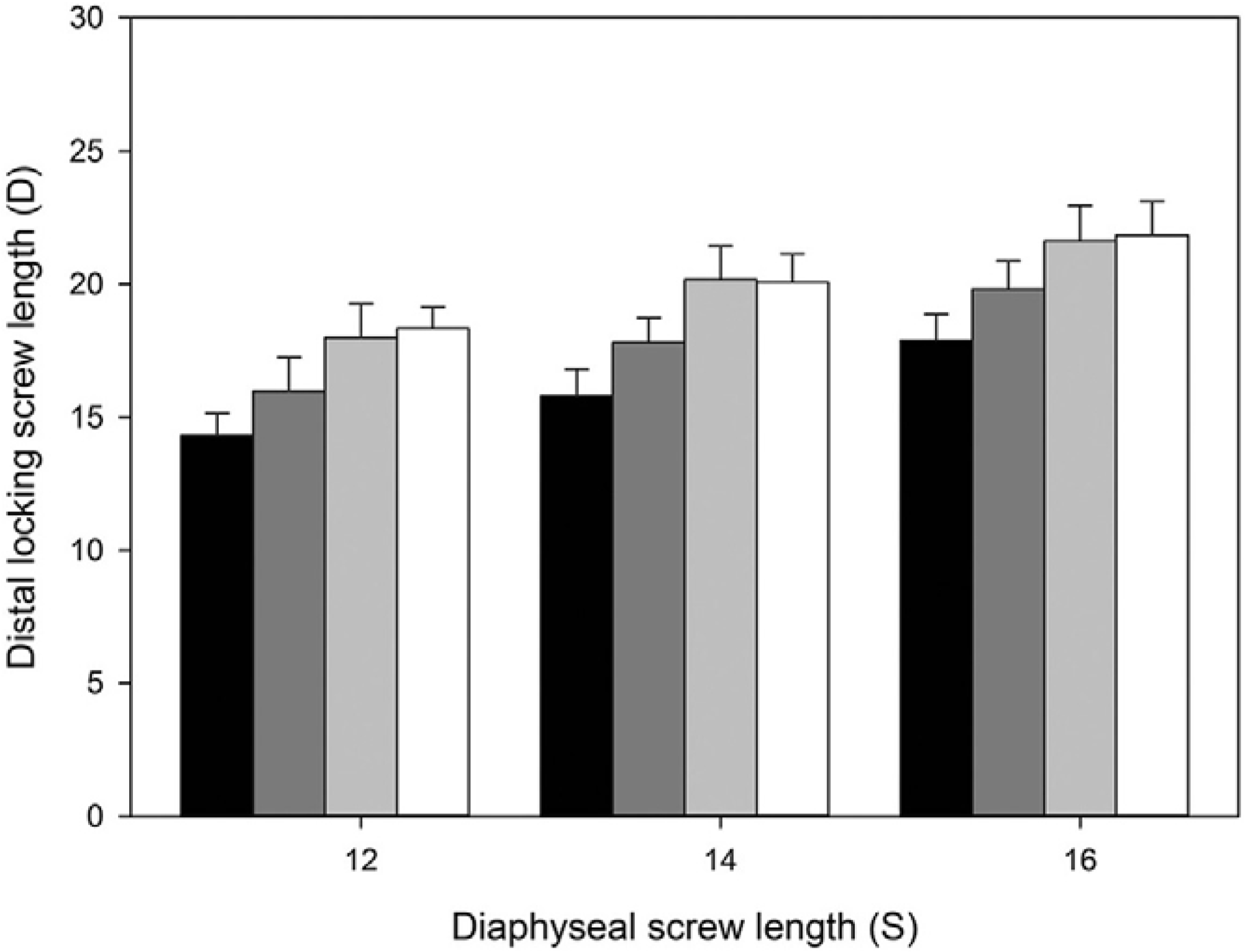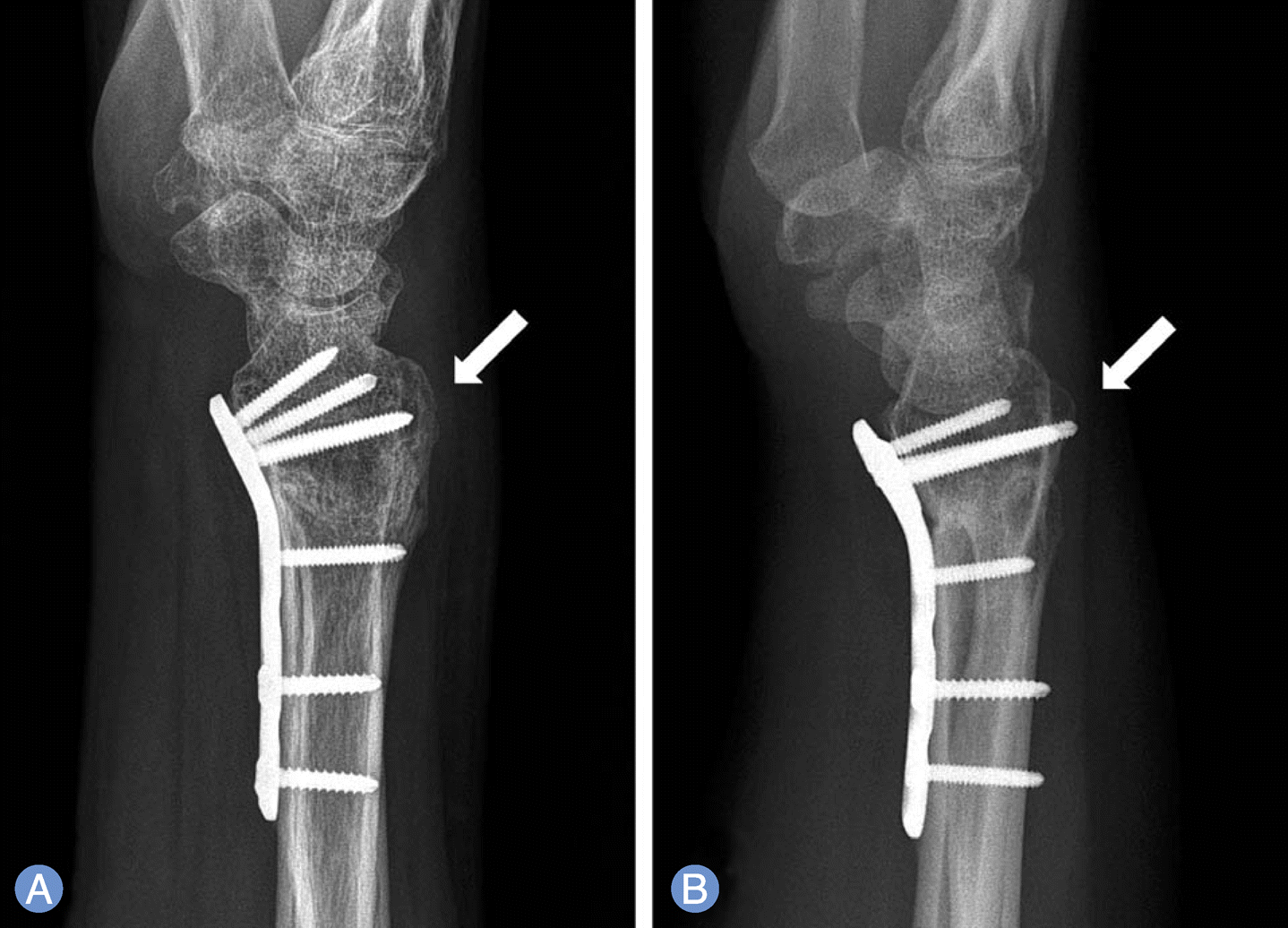Abstract
Purpose:
To determine the relationship between the length of distal locking screws and diaphyseal screws in volar plate fixation of distal radius fractures.
Methods:
A retrospective review was performed of 169 patients who underwent volar locking plate fixation for treatment of distal radius fractures. All patients received 2.4 mm LCP volar extra-articular distal radius plate (DePuySynthes). The length of the diaphyseal screw which was placed in the elongated hole was correlated with the length of a distal locking screw from radial most (D1) to ulnar most (D4). We also evaluated distal screw penetration of the dorsal cortex and plate removal rate.
Results:
The length of the diaphyseal screw which was placed in the elongated hole strongly correlated with the length of a distal locking screw. Average D1 screw length was 2 mm longer than the diaphyseal screw, and average D2 screw length was 4 mm longer than the diaphyseal screw. D3 and D4 screw were 6 mm longer than the diaphyseal screw. Plate removal was necessary in 13 patients (8%) due to screw irritation. These patients had significantly longer screws than average. Flexor or extensor tendon ruptures did not occur in this cohort.
Go to : 
REFERENCES
1. Chung KC, Spilson SV. The frequency and epidemiology of hand and forearm fractures in the United States. J Hand Surg Am. 2001; 26:908–15.

2. Park C, Ha YC, Jang S, Jang S, Yoon HK, Lee YK. The incidence and residual lifetime risk of osteoporosis-related fractures in Korea. J Bone Miner Metab. 2011; 29:744–51.

3. Osada D, Kamei S, Masuzaki K, Takai M, Kameda M, Tamai K. Prospective study of distal radius fractures treated with a volar locking plate system. J Hand Surg Am. 2008; 33:691–700.

4. Soong M, Earp BE, Bishop G, Leung A, Blazar P. Volar locking plate implant prominence and flexor tendon rupture. J Bone Joint Surg Am. 2011; 93:328–35.

5. Al-Rashid M, Theivendran K, Craigen MA. Delayed ruptures of the extensor tendon secondary to the use of volar locking compression plates for distal radial fractures. J Bone Joint Surg Br. 2006; 88:1610–2.

6. Wall LB, Brodt MD, Silva MJ, Boyer MI, Calfee RP. The effects of screw length on stability of simulated osteoporotic distal radius fractures fixed with volar locking plates. J Hand Surg Am. 2012; 37:446–53.

7. Park DH, Goldie BS. Volar plating for distal radius fractures: do not trust the image intensifier when judging distal subchondral screw length. Tech Hand Up Extrem Surg. 2012; 16:169–72.
Go to : 
 | Fig. 1.
(A) The length of the distal locking screw was measured from radial (D1) to ulnar (D4) and correlated with that of the cortical screw placed in the elongated hole (S). (B) The length of the distal locking screw was determined by measuring depth gauze and subtracting 2 mm. |
 | Fig. 2.Relationship between the length of distal locking screws and diaphyseal screws in volar plate fixation of distal radius fractures. Black bar represents the length of D1, while white bar represents the length of D4. Error bar represents standard deviation. |
 | Fig. 3.
(A) The distal locking screw in the intermediate column (white arrow) was not protruded when it was 4 mm longer than the cortical screw. (B) The distal locking screw in the intermediate column (white arrow) was protruded from the cortical bone when it was 6 mm longer than the cortical screw. The plate and screws have to be removed because of the extensor tendon irritation. |




 PDF
PDF ePub
ePub Citation
Citation Print
Print


 XML Download
XML Download